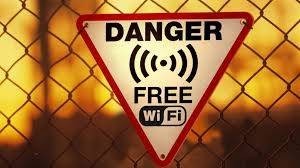12 Days to a Safe Christmas: Day 5 – Don’t Tell Facebook You Won’t Be Home for the Holidays
Holiday Security Tips: On the fifth day of Christmas, the experts gave to me, 5 Facebook fixes
In general, we share too much information on social media sites. During the holidays, we are positively intoxicated with the giving spirit! Without thinking, we share our holiday travel plans, click on seemingly charitable links or post pictures of a fun night out. And when you share with friends on Facebook, you are sharing with their friends and ultimately, most of the literate world. The problem is, some of those people aren’t really friends and only want to separate you from your holiday dollars.
Solution: Apply these five fixes to ALL of your social sharing (not just Facebook)
- Customize your privacy settings. Sixty percent of social network users are unaware that their default privacy settings let others into most of their personal information. Facebook does a decent job of explaining how to lock your privacy down(https://www.facebook.com/help/privacy) but you must spend at least 90 minutes going over the settings to properly protect yourself.
- Protect your passwords. Don’t let the bad guys take over your account and contact your friends as if they were you. Create a unique,
 strong, alpha-numeric-symbol password without using a dictionary word, birthdate, pet’s name or other personal identifier. Use this password only for a single site and don’t share it with anyone. Be careful of using your Facebook login for other sites, as those sites gain access to your private information.
strong, alpha-numeric-symbol password without using a dictionary word, birthdate, pet’s name or other personal identifier. Use this password only for a single site and don’t share it with anyone. Be careful of using your Facebook login for other sites, as those sites gain access to your private information. - Log into Facebook only ONCE each session. If it looks like Facebook is asking you to log in a second time, skip the links and directly type www.facebook.com into your browser address bar. Phishing emails and social media posts will often send you to sites that look like Facebook but act like a data criminal. When in doubt, log out.
- Beware of free offers, big discounts and requests for charity (even if they come from your friends). If the offer in the post is too enticing, too good to be true or too bad to be real, don’t click. Chances are pretty good that your friend’s account has been hijacked and the hacker is serving you a warm dish of malware. If the post is out of character for that friend, email them and ask if it’s real.
- Don’t check in when you aren’t home and don’t post your travel plans. Based on social media feeds and locational check-in services alone (Foursquare), it is simple to map your whereabouts and signal thieves when you aren’t home. If you have to let friends know where you are during the holidays, send a group text or email.
No matter if you’re headin’ home for the holidays or off to Whoville, remember to post your pictures and tell those tales AFTER you’re safely home. On the sixth day of Christmas…
To review our tips from previous days, click here.
About Cybersecurity Keynote Speaker John Sileo
John Sileo is the founder and CEO of The Sileo Group, a cybersecurity think tank, in Lakewood, Colorado, and an award-winning author, keynote speaker and expert on technology, cybersecurity, and tech/life balance. He energizes conferences, corporate trainings and main-stage events by making security fun and engaging. His clients include the Pentagon, Schwab, and organizations of all sizes. John got started in cybersecurity when he lost everything, including his $2 million business, to cybercrime. Since then, he has shared his experiences on 60 Minutes, Anderson Cooper, and even while cooking meatballs with Rachel Ray. Contact John directly to see how he can customize his presentations to your audience.


 We’ve all been there before–killing time at the airport, meeting up with a colleague at a local coffee shop, staying at a hotel…–and we want to connect to the Internet. Nearly everyone offers free Wi-Fi these days, including lots of cyber criminals. They’ve become so good at mimicking legitimate hotspots that you’d better know what you’re looking for before you connect! Here are our top six tips to stop those Wi-Fi Hotspot Hackers.
We’ve all been there before–killing time at the airport, meeting up with a colleague at a local coffee shop, staying at a hotel…–and we want to connect to the Internet. Nearly everyone offers free Wi-Fi these days, including lots of cyber criminals. They’ve become so good at mimicking legitimate hotspots that you’d better know what you’re looking for before you connect! Here are our top six tips to stop those Wi-Fi Hotspot Hackers. DENVER, /PRNewswire/ — Just a decade before stepping on stage to receive the speaking industry’s most prestigious award, John Sileo thought he might be going to jail for crimes committed in his name by another person.
DENVER, /PRNewswire/ — Just a decade before stepping on stage to receive the speaking industry’s most prestigious award, John Sileo thought he might be going to jail for crimes committed in his name by another person.